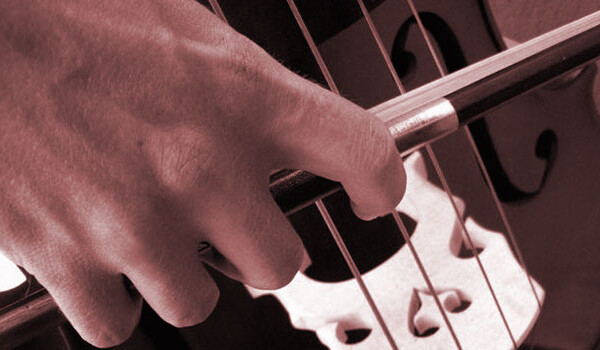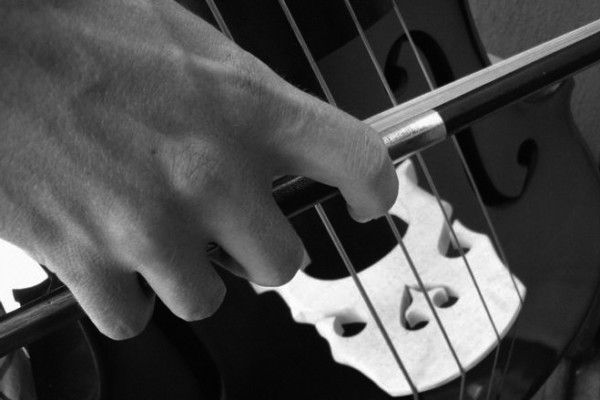Consistent Weight and Legato Bowing
One of the most common deficiencies bass players have when using the bow is an inconsistency of tone in various parts of the bow. There may be times when such inconsistency is musically desirable, but it should always happen “on purpose” and not merely as a result of a lack of bow control.
For example when playing the passage below, we should be able to keep a consistent tone from frog to tip and have a smooth (i.e. without undue noise), yet clear, beginning to each note.

Listen closely and you may find this is not the easy task it appears to be.
Although bow speed, contact point (of the bow on the string) and pressure (sometimes referred to as “weight” to avoid the potentially negative connotations of the word “pressure”) all play a role, I have noticed that inadequate weight into the string is the most common cause of an undesirable tone. The most common error is that the pressure exerted on the string by the bow diminishes as we move to the upper half of the bow, i.e. nearer to the tip. The tonal result is a less focused and weaker tone in the upper half of the bow.
Assuming a good tone at the frog, we must make changes to our bow arm if we are to create the same tone at the tip as we do at the frog. The first step, however, is determining what the appropriate weight is to achieve a good tone at the frog. How much is too much? How much is enough?
Try this: Place the bow on the D String at the frog. Allow the weight from your arm to fall into the bow. If the weight is adequate, you should be able move the bow left and right (up bow and down), thereby pulling the string back and forth, without making a sound. The string should push and pull with your small movements but no tone should be heard. Being able to do this will ensure that you have at least minimum weight into the string. You may have too much, but you at least have the minimum.
Now, play a quarter note down bow. If the weight is appropriate you should hear an immediate beginning to the note, without extraneous noise. The note should begin clearly with an ictus or point, but not an accent, and continue with a good tone. If you had appropriate weight to move the string left and right without making a sound but had extraneous noise when playing the quarter not, then you should experiment with less weight. Take time to find the correct weight to achieve this result. Appropriate weight will change based on bow placement, so be aware of this fact. Once you do play this at the frog, you are ready to experiment throughout the bow.
When playing the following example, use small bow strokes of less than an inch. In between each note make the necessary adjustments needed to ensure that you are still gripping the string with appropriate weight before you play the next note. Between each note you should be able to push and pull the string without making a sound.

As always, use the minimum physical effort to achieve the appropriate result. Although playing the bass requires muscular effort, be aware of your body and work with body position and gravity as much as possible.
Once you can play the example below, remove the fermatas and play it simply as staccato bows.

When you can do this with the same tone and attack on each note, then you know the feeling of weight needed in each part of the bow and should be able to play our original example with consistent tone in all parts of the bow.

Don’t lose the tone at the tip. The attack of the up bow should be equal to that of the down bow. The key to a good legato bow is a good staccato bow.
Dr. Donovan Stokes is on the faculty of Shenandoah University-Conservatory. Visit him online at www.donovanstokes.com and check out the Bass Coalition at www.basscoalition.com.



